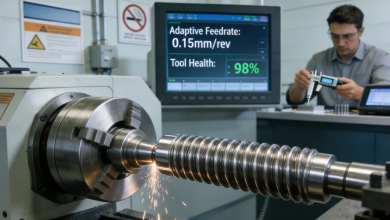The manufacturing industry is often quick to adopt new technologies. The sector was among the first to embrace automation, and as the data revolution gains momentum, manufacturers’ Industry 4.0 initiatives are growing. While many of these technologies hold vast potential, artificial intelligence (AI) is the most promising.
AI adoption in manufacturing is enthusiastic, albeit still new. While 79% of organizations in 2020 were exploring AI, only 21% were actively using it. However, most of those who have implemented it are becoming more reliant on it. As use cases grow and AI’s benefits become more tangible, it’s clear that this technology could transform the industry.
Here are five leading areas where that transformation is happening.
1. Quality Control
One of the most common use cases for AI in manufacturing is in quality control. According to one survey, 39% of manufacturers who use AI in daily operations use it for quality inspections, and 35% use it for product quality checks. Since AI can quickly analyze so many different data points, it’s ideal for finding flaws and anomalies.
For best results, AI needs both quality references for what products should look like and effective lighting to conduct the inspection properly. However, it can spot defects far faster and more accurately than humans. Manufacturers then reduce their chances of releasing poor-quality products while reducing the time spent inspecting. Automating this process also means manufacturers can allocate human workers to other areas, improving overall productivity.
When Heineken introduced such a system to a bottling plant in 2018, the results were astounding. The system could scan 80,000 bottles an hour at nearly a 0% error rate.
2. Predictive Maintenance
Another popular AI application in manufacturing is predictive maintenance. This practice involves using AI to analyze various machine operation factors to predict when equipment will need maintenance. That way, manufacturers can avoid costly breakdowns while avoiding unnecessary repairs.
Reactive maintenance, where workers fix issues after they arise, is inefficient because it entails unexpected breakdowns, leading to costly repairs and lost productivity. Preventive maintenance is better but still inefficient because unnecessary checks and repairs hinder productivity. AI fixes the downsides to both through predictive maintenance.
These savings add up to impressive results. Studies show that preventive maintenance can lead to a 30% reduction in maintenance costs and a 45% reduction in downtime. For a large manufacturer, that could equate to savings of millions of dollars annually.
3. Inventory Management
Inventory management is another common pain point for manufacturers that AI can improve. Manufacturers often lack visibility into their inventory, leading to inefficient picking processes, wasted space, and delays. AI can help by analyzing inventory levels and usage trends, providing insights for both organization and ordering.
Digital warehouse management systems can provide up to 99% accuracy over inventory records, far more than traditional systems. AI models can then work from that data to see if any organizational changes would improve efficiency. For example, moving often-used items to lower, more reachable shelves could save picking time.
AI could also predict future demand to adjust how much of each part manufacturers order. That way, they could adjust to seasonal trends without wasting inventory space or facing shortages. AI-powered robotic process automation (RPA) can automate and refine many of these tasks, improving overall efficiency. Companies adopting AI in a digital manufacturing platform often extend automation beyond the production floor, optimizing administrative workflows like procurement, compliance, and scheduling.
4. Process Optimization
AI can provide similar benefits in other manufacturing processes, too. Manufacturing lines may have inefficiencies that go unnoticed by human workers, but AI can find them and suggest alternatives.
AI models can create digital twins of a manufacturing facility to model various scenarios. They can then run simulations of how different changes would impact efficiency and output, comparing them to find the best solution. Manufacturers can then ensure they achieve the maximum productivity possible within their means.
This optimization process can happen in real-time, too. Mitsubishi Electric reduced its cycle time to one-tenth of conventional methods by using AI to adjust automated systems’ speed, rate, and acceleration in real-time. That level of optimization would be impossible with manual methods.
5. Administrative Efficiency
AI also has potential in the administrative side of the manufacturing industry. While production processes are often the focus of these improvements, office work like data entry and scheduling is typically inefficient. AI-powered robotic process automation (RPA) can automate and refine many of these tasks, improving overall efficiency.
On average, workers spend 60 hours a month on repetitive, manual tasks that automation could handle instead. Consequently, manufacturers could achieve the productivity equivalent of having an extra work week each month by applying RPA.
Since AI doesn’t get tired, it’s less error-prone than humans performing data-heavy, repetitive tasks. The human workers that no longer have to perform these duties can then focus on more value-adding tasks. These benefits lead to 92% of RPA adopters saying it meets or exceeds their expectations.
Manufacturing Won’t Be the Same After AI
As a relatively new technology, AI has likely yet to show its full potential in manufacturing. Considering the benefits it’s already provided for manufacturers, it’s clear that it is revolutionizing the industry.
The manufacturing industry is at a historical turning point. There will be a distinct difference between the pre-AI and post-AI manufacturing sectors.




